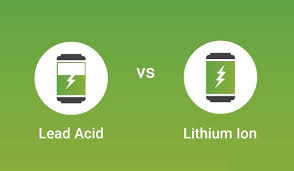
The lead-acid battery has been around for over 100 years that costs less, requires regular maintenance to keep them working properly and doesn’t last as long.
Lithium-ion battery relatively newer technology with a longer lifespan, high power density, higher efficiency, does not require regular maintenance but costs more.
Both technologies are affected by discharge cycles, Lithium-ion has a significantly higher cycle life than lead-acid in deep discharge applications such as in solar. This disparity is further increased as ambient temperatures increase.
The cycle life of both chemistries can be increased by limiting the depth of discharge (DoD), discharge rate, and temperature, but lead-acid is generally much more sensitive to each of these factors.
In hot climates where the average temperature is 33°C, the disparity between lithium-ion and lead-acid is further increased. The cycle life for lead-acid (flooded and VRLA) drops to 50% of its moderate climate rating while lithium-ion will remain stable until temperatures routinely exceed 49°C.
Another critical consideration for lead-acid is how long the system will take to discharge. The shorter the discharge period, the less capacity is available from the lead-acid battery. A 200Ah lead-acid battery will only deliver 120Ah if discharged over a one hour period. In contrast, a 200Ah lithium-ion battery system will achieve over 184Ah. This condition makes lithium-ion very well suited for applications where full discharge occurs in less than eight hours.
| Flooded lead-acid | VRLA lead-acid | Lithium-ion (LiNCM) | |
| Energy Density (Wh/L) | 80 | 100 | 250 |
| Specific Energy (Wh/kg) | 30 | 40 | 150 |
| Regular Maintenance | Yes | No | No |
| Initial Cost ($/kWh) – prices are only a market average and estimate | 65 | 120 | 600 |
| Cycle Life | 1,200 @ 50% | 1,000 @ 50% DoD | 1,900 @ 80% DoD |
| Typical state of charge window | 50% | 50% | 80% |
| Temperature sensitivity | Degrades significantly above 25°C | Degrades significantly above 25°C | Degrades significantly above 45°C |
| Efficiency | 100% @20-hr rate 80% @4-hr rate 60% @1-hr rate | 100% @20-hr rate 80% @4-hr rate 60% @1-hr rate | 100% @20-hr rate 99% @4-hr rate 92% @1-hr rate |






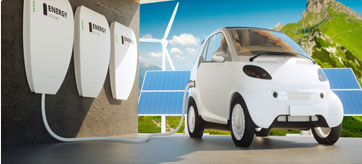
 There are many different energy storage technologies – mechanical, pumped storage, thermal – molten salt, and chemical-batteries. Each type of storage has unique characteristics that differentiate them from others, as well as the types of power sources with which they can be integrated.
There are many different energy storage technologies – mechanical, pumped storage, thermal – molten salt, and chemical-batteries. Each type of storage has unique characteristics that differentiate them from others, as well as the types of power sources with which they can be integrated.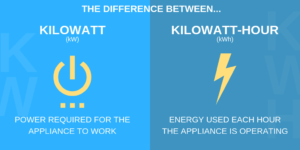 People looking for solar options often puzzled with terms kilowatt and kilowatt-hours. Electricity used is measured by kilowatt hour and the solar power systems are sized in kilowatts. This is where questions often come about kilowatts and kilowatt-hours.
People looking for solar options often puzzled with terms kilowatt and kilowatt-hours. Electricity used is measured by kilowatt hour and the solar power systems are sized in kilowatts. This is where questions often come about kilowatts and kilowatt-hours.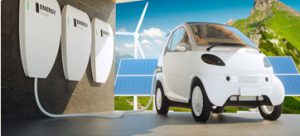 Why Install Batteries?
Why Install Batteries?  Incorporating energy storage into a solar array is not as easy as just picking a battery off the shelf. Certain chemistries work better in certain environments and storage capabilities are influenced by the solar application.
Incorporating energy storage into a solar array is not as easy as just picking a battery off the shelf. Certain chemistries work better in certain environments and storage capabilities are influenced by the solar application.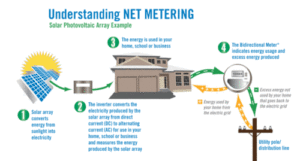 The Net Metering program provides Ontarians with the opportunity to optimize their energy usage and generate the electricity needed with solar panels on their rooftops. From start to finish, a typical Net Metering installation takes two to three months and New Dawn Energy takes care of the entire process for you from initial assessment to commissioning with skills and professionalism.
The Net Metering program provides Ontarians with the opportunity to optimize their energy usage and generate the electricity needed with solar panels on their rooftops. From start to finish, a typical Net Metering installation takes two to three months and New Dawn Energy takes care of the entire process for you from initial assessment to commissioning with skills and professionalism.